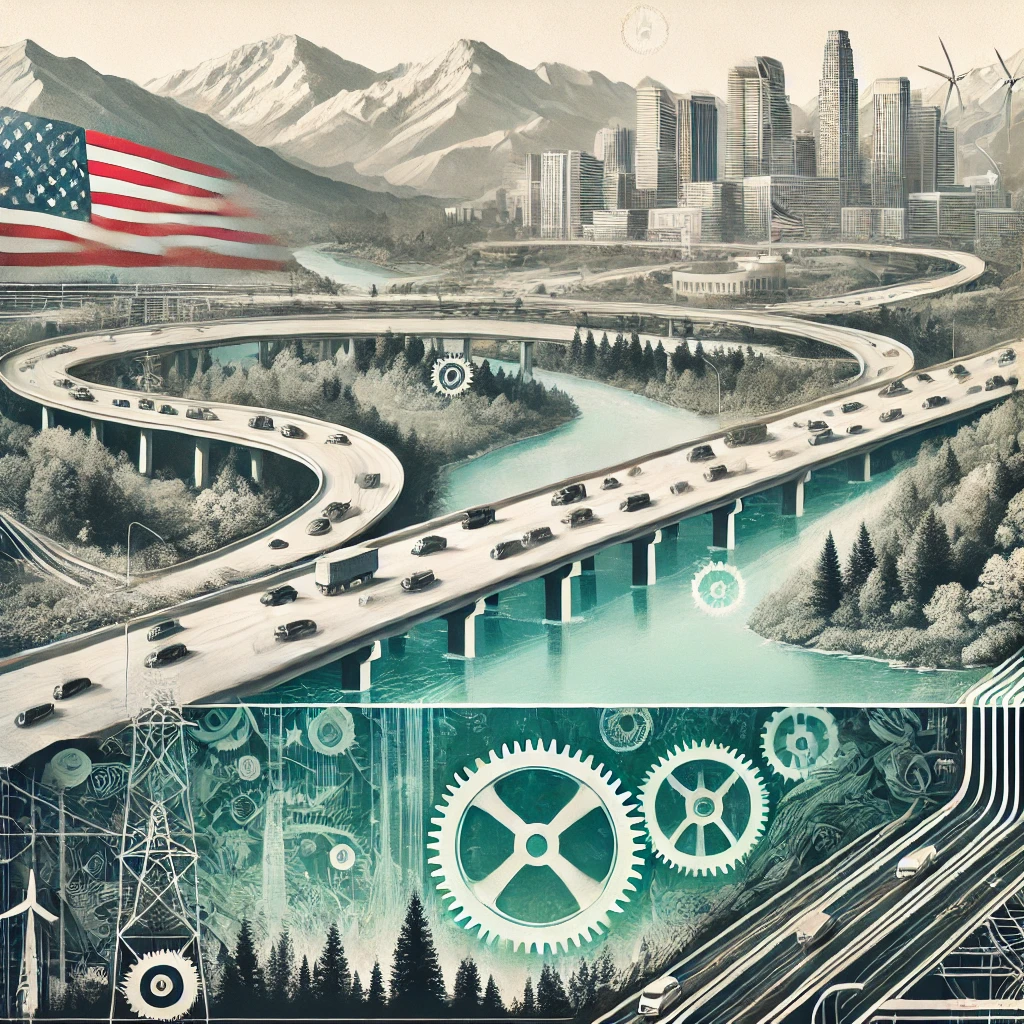During my experience of long drives across the United States I always consider the political and economic drivers for the landscape. As you travel through the United States, whether exploring its vast national parks, admiring its historical landmarks, or driving across sprawling highways, there is an overwhelming sense of intentionality behind every structure and monument. The nation’s infrastructure is often celebrated as a symbol of progress and preservation. However, when you start to critically scratch the surface, a troubling pattern emerges: behind many decisions around infrastructure, there appears to be a covert and underhanded motivation that often goes unnoticed by the public.
Beneath the Surface: The Hidden Motivations Behind Infrastructure
At first glance, infrastructure in the U.S. seems straightforward. Roads are built for transportation, parks are preserved for environmental reasons, and monuments are protected for historical significance. But when you look closely, a deeper, more complex story often unfolds. The decision-making process behind much of the country’s infrastructure is heavily influenced by less obvious factors, including political maneuvering, financial interests, and control over resources.
Take the case of national monuments, like Tuzigoot National Monument and Montezuma Well in Arizona, which, on the surface, seem to be preserved purely for their cultural and environmental value. These sites, while undeniably significant, may also serve broader geopolitical and strategic purposes. As discussed previously, Tuzigoot and Montezuma Well are protected not just for their historical relevance, but potentially as a way for the federal government to maintain control over key natural resources like water and copper reserves in Arizona.
This theme repeats across the landscape of American infrastructure. What may seem like straightforward decisions are often layered with ulterior motives that reflect the interests of power and control, rather than simple public good.
Infrastructure, Land Control, and Resource Management
Land management and resource control are significant drivers of U.S. infrastructure development. Whether it’s the construction of dams, highways, or federal land designations, there are often covert interests at play. Consider the extensive network of dams and reservoirs built throughout the 20th century. While these projects are typically framed as efforts to generate hydroelectric power or prevent flooding, they also enable federal control over vast amounts of water—a critical resource in the arid West.
- Water as Power: Projects like the Hoover Dam not only provided electricity and managed the Colorado River’s flow, but they also granted the federal government significant control over water distribution in a region where water is a highly contested resource. This infrastructure isn’t just about utility; it’s about who controls the resource and who benefits from it.
Similarly, federal control over national monuments often extends beyond historical preservation. Take Montezuma Well, for instance. The well provides a rare source of consistent water in Arizona’s dry climate, and its designation as a protected site ensures that the federal government maintains authority over its use. Protecting the well might seem altruistic, but it also prevents local entities from tapping into this valuable resource, reinforcing federal dominance over the area.
Highways: Facilitating Transportation or Something More?
America’s vast interstate highway system is often lauded as one of the country’s greatest achievements, promoting interstate commerce and mobility. However, when you scratch the surface, you realize that its creation was about more than just transportation. The Federal-Aid Highway Act of 1956, which authorized the construction of the interstate system, had another purpose: national defense.
The highways were designed to facilitate the rapid movement of military equipment and personnel in the event of a national emergency. At the same time, these roadways often carved through low-income neighborhoods and communities of color, displacing residents and contributing to urban sprawl. So while the public may have been sold the idea of the highway system as a means of improving transportation, the covert reality was that it also served military and economic interests, often at the expense of vulnerable communities.
Airports: Security or Surveillance?
The construction of major airports across the country is another area where federal decisions may have hidden agendas. Airports are necessary for national and international travel, but they also serve as key hubs for government surveillance and data collection. Since the attacks of September 11, 2001, airport security has become a cornerstone of national policy, with the establishment of the Transportation Security Administration (TSA) and the implementation of rigorous screening procedures.
However, this focus on security has also given rise to a vast surveillance apparatus that collects personal data on millions of travelers. These policies, ostensibly designed to keep passengers safe, also serve to expand the government’s ability to monitor the movement of people both domestically and internationally. The creation of no-fly lists, extensive security checks, and pervasive use of technology like facial recognition all hint at broader surveillance objectives that extend beyond passenger safety.
The Covert Agenda of “Public” Parks and Monuments
Public parks, nature reserves, and national monuments are celebrated as spaces for recreation, conservation, and historical education. But even in these seemingly benign areas, hidden motivations can often be found. National park systems like Yellowstone and Yosemite are preserved not only for their natural beauty but also for their ability to control large areas of land and the resources within them.
- Control Over Natural Resources: In many cases, national parks sit atop rich mineral deposits, valuable timber, or water resources. By placing these lands under federal protection, the government can prevent private companies from extracting these resources, while also maintaining control over land use. This control can be leveraged for future strategic purposes, especially in regions where resource scarcity is a growing concern.
- Symbolic Representation of Power: Protecting national monuments also serves to reinforce the idea of federal authority over history, culture, and geography. While the designation of sites like Tuzigoot National Monument may appear to be a gesture of respect for Native American heritage, it also allows the federal government to dictate who has access to these culturally significant lands and how they are interpreted. In this sense, these designations are as much about control as they are about preservation.
The Theme of Federal Overreach: Hidden Hands in Plain Sight
The theme that emerges from examining U.S. infrastructure projects, land designations, and transportation systems is one of federal overreach. Whether through highways, airports, or national monuments, there is often a covert layer of control that goes unnoticed by the public. Decisions are framed as being in the national interest, whether for transportation, conservation, or safety. But beneath the surface, these decisions frequently serve to consolidate federal authority, control resources, and monitor populations.
This is not to say that every decision is rooted in malice or deception, but rather that infrastructure projects are rarely as straightforward as they seem. As we saw with Tuzigoot and Montezuma Well, federal decisions often reflect a complex mix of historical preservation, resource management, and political control. By critically examining these projects, we gain insight into the broader motivations that shape the infrastructure around us.
Conclusion
When you critically scratch the surface of most U.S. infrastructure decisions, there is almost always more than meets the eye. Whether it’s national parks, water systems, or transportation infrastructure, covert and underhanded motivations often lie beneath the stated goals. Federal land designations, like those at Tuzigoot National Monument and Montezuma Well, reflect a broader pattern of resource control, geopolitical strategy, and federal oversight. The next time you pass by a historical landmark or drive along a major highway, consider the hidden reasons behind its creation—you may find more than just a convenient public service.
This perspective challenges the surface-level narratives we often accept and encourages us to think critically about the decisions shaping the world around us. While preservation and progress are noble goals, they are often interwoven with deeper, strategic interests that benefit those in power.
Discover more from Kango Anywhere
Subscribe to get the latest posts sent to your email.




